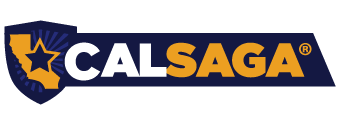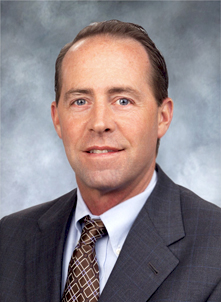THE SECURITY INDUSTRY’S NEED FOR EARNED WAGE ACCESS
Ryan Faith, TEAM Software by WorkWave, CALSAGA Network Partner
Even as the security industry works to improve its hiring rates, the labor market remains challenging for companies with distributed workforces.
A major problem? High employee turnover.
To mitigate this significant staffing issue, security companies must consider the value of strong retention programs and look at options that provide employees with additional benefits – like earned wage access.
What is Earned Wage Access, and why is it helpful?
Earned wage access provides a way for employees to receive pay for hours they have worked, without waiting for the next scheduled payday. This seemingly minor perk has proven to be an impactful benefit, with one security company attributing it to helping them earn a Great Place to Work Certification.
According to Bankrate’s 2024 Annual Emergency Savings Report, a staggering 59% of Americans are uncomfortable with their level of emergency savings. Another 93% of hourly workers find that managing their finances is stressful, with 71% saying that stress has a negative impact on their mental or physical health, according to PwC’s 2024 Employee Financial Wellness Survey. That same report discovered that one in three full-time employees say that money worries have negatively impacted their productivity at work.
As the traditional paycycle can unfortunately leave employees feeling financially vulnerable, this benefit gives your employees control over their finances and a way to easily reduce stress. Ultimately, this can improve their mental and physical health and helps promote improved productivity, which can increase operational efficiency throughout your business.
What are the Immediate and Long-term Benefits?
Employee Benefits
The immediate benefits to implementing earned wage access include instant financial flexibility, reduced financial stress and improved financial wellness of your employees.
It allows employees to access their earned wages immediately, so that they can use it to cover life’s expenses when the unexpected occurs, and it can help them build healthier financial habits to ultimately achieve their financial goals. In fact, 60% of earned wage access users say that they feel less stress about their finances following activation of the service, according to a 2023 user survey from earned wage access provider, DailyPay.
Employer Benefits
Earned wage access brings just as many benefits to you as the employer as there are for your employees.
First, it helps alleviate the ongoing labor issue – on average, companies see an increase of employee retention as high as 36%, according to a survey of internal data between TEAM Software and partner DailyPay.
Second, it helps provide a competitive advantage. On average, the same internal survey showed that 86% of companies with an EWA solution believe it helps uniquely separate them from their top competitors. In an industry that always struggles with retaining top talent, this helps retain more people — resulting in better operational performance overall over other companies.
Lastly, it is simple to activate with no ongoing management of the feature. Your employees will have access to their earned wages before payday without disrupting your payroll cycle or your revenue. It’s a win-win for all parties involved.
Software Integration for Easy Activation
Earned wage access is currently an add-on feature available through TEAM Software’s ERP solution, WinTeam. For more information on the benefits of earned wage access and TEAM Software’s solutions built specifically for security companies, visit us at teamsoftware.com.
Ryan Faith, Account Management Team Lead at TEAM Software by WorkWave
Ryan is a customer advocate who partners with TEAM Software by WorkWave customers to help identify where software can make their businesses more efficient, competitive and profitable. In his six years with TEAM, Ryan has worked alongside many of the world’s leading security firms and has developed a specialized understanding of the unique challenges faced by the industry.






 Shaun Kelly joined Tolman & Wiker Insurance Services in 2005. He specializes in all lines of property and casualty insurance for industries including contract security firms, agriculture, construction, oil and gas. Shaun received a BS in Business Administration with a major in Finance from California State University in Fresno, California. He is an active member of several industry associations, including the Association CALSAGA, the Kern County Builders Exchange and the Independent Insurance Agents of Kern County. Shaun can be reached at 661-616-4700 or
Shaun Kelly joined Tolman & Wiker Insurance Services in 2005. He specializes in all lines of property and casualty insurance for industries including contract security firms, agriculture, construction, oil and gas. Shaun received a BS in Business Administration with a major in Finance from California State University in Fresno, California. He is an active member of several industry associations, including the Association CALSAGA, the Kern County Builders Exchange and the Independent Insurance Agents of Kern County. Shaun can be reached at 661-616-4700 or